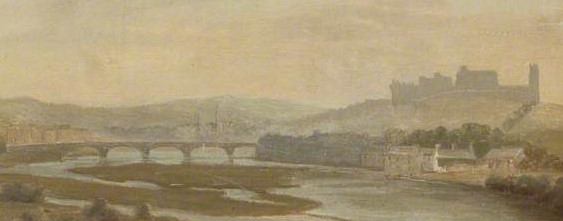Skerton is an old settlement that was named in the Domesday Book as ‘Schertune’. Again the Anglo-Saxon ‘sch’ sound has been swapped for the harder Scandinavian ‘sk’.
The start of the name comes from the Old Norse ‘sker’ (the Old English equivalent is ‘scar’) meaning ‘a bed of rough gravel or stones’. So, the meaning is ‘the larger settlement or village at the ayre or gravel bank’.
That part of the River Lune is well supplied with gravel banks, so the one that Skerton was named after more than 1,000 years ago may have been built over or disappeared a long time ago.
Skerton of course is on the north side of the Lune close to the crossing point at Lancaster. Old Skerton is not directly opposite Lancaster but slightly upriver.
The picture shows a section taken from a painting of around 1830 shows Skerton and the gravelly nature of the Lune. Although the castle looks directly behind Skerton it is on the other side of the river as this section taken from Yates’ map of 1786 shows.


